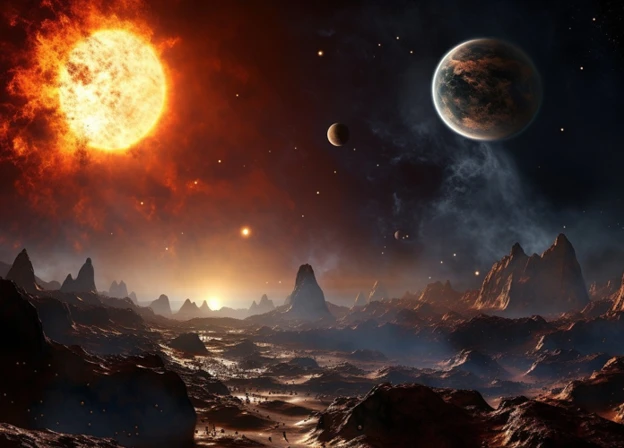Contents
- Welcome to the Enigmatic World of Exoplanets
- What are Exoplanets?
- The Diversity of Exoplanets
- The Hunt for Habitable Worlds
- Uncovering Exoplanetary Secrets
- Implications and Future Discoveries
- Conclusion
-
Frequently Asked Questions
- What is the difference between exoplanets and planets?
- How do scientists detect exoplanets?
- What are hot Jupiters?
- What are super-Earths?
- Do all exoplanets have moons?
- What is the Goldilocks Zone?
- How do scientists study the atmospheres of exoplanets?
- What factors make a planet habitable?
- Are there any missions dedicated to studying exoplanets?
- Could there be extraterrestrial life on exoplanets?
- References
-
Frequently Asked Questions
- How many exoplanets have been discovered so far?
- What makes exoplanets different from planets in our own solar system?
- How do astronomers detect exoplanets?
- What is the transit method of detecting exoplanets?
- Can exoplanets support life?
- What are exomoons?
- What is the significance of atmospheric analysis in studying exoplanets?
- What are the key factors for exoplanet habitability?
- Are there any upcoming missions focused on finding exoplanets?
- What are scientists hoping to discover through the search for extraterrestrial life?
- References
- Read More
Welcome to the Enigmatic World of Exoplanets

Within the vast expanse of the universe lies an intriguing mystery waiting to be unraveled: exoplanets. These celestial bodies, beyond our own solar system, hold the secrets of distant worlds and the potential for extraterrestrial life. With their diverse characteristics and elusive nature, exoplanets have captivated the scientific community and fueled our imagination. In this article, we will embark on a captivating journey, delving into the definition, discovery methods, and unique features of exoplanets. We will explore the search for habitable worlds and the tools astronomers employ to unlock the mysteries of exoplanetary atmospheres, compositions, and habitability. Join us as we dive deep into the enigmatic realm of exoplanets and unlock the secrets that lie within.
What are Exoplanets?
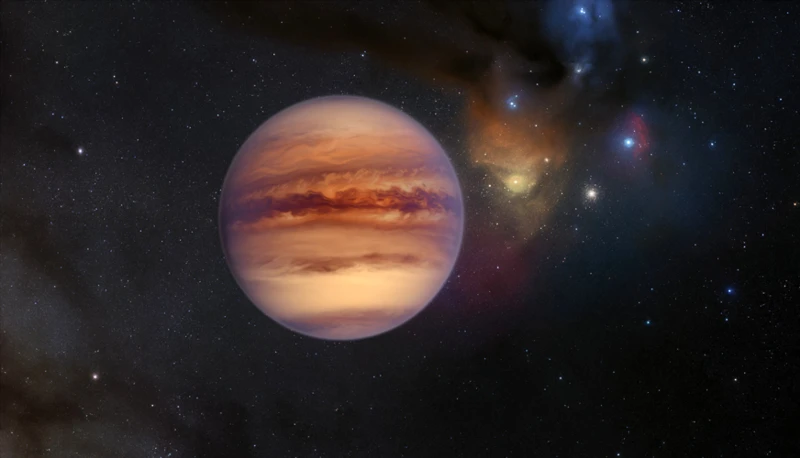
Exoplanets are celestial bodies that orbit stars outside of our own solar system. They are often referred to as extrasolar planets. These distant worlds come in a variety of sizes, ranging from smaller than Earth to larger than Jupiter. Exoplanets may have diverse atmospheres, compositions, and temperatures, which influence their overall characteristics and potential habitability. They can be rocky, gaseous, or a combination of both, and some even possess powerful magnetic fields. Additionally, exoplanets can have unique features such as rings, moons, or even multiple suns, like the famous Tatooine from Star Wars.
Discovering exoplanets is no easy feat, as they are incredibly faint and often dwarfed by the bright light of their host stars. Astronomers have developed various techniques to detect these elusive worlds. One method is the transit method, where astronomers analyze the periodic dimming of a star’s light caused by an exoplanet passing in front of it. Another method is the radial velocity method, which detects subtle wobbles in a star’s motion caused by the gravitational pull of an orbiting exoplanet. Additionally, gravitational microlensing, astrometry, and direct imaging have also contributed to the discovery of exoplanets. The combined efforts of ground-based observatories and space telescopes have led to the identification of thousands of exoplanets, with many more waiting to be found.
Links:
Definition and Characteristics
Exoplanets, also known as extrasolar planets, are defined as planets that orbit stars outside of our own solar system. They are located beyond the boundaries of our familiar celestial neighborhood. These captivating worlds exhibit a diverse range of characteristics and properties. While exoplanets come in various sizes, from smaller than Earth to larger than Jupiter, their classification depends on their mass and composition. Rocky exoplanets, similar to Earth, are often referred to as terrestrial planets, while gaseous exoplanets, resembling Jupiter and Saturn, are termed gas giants. Some exoplanets even fall into the intriguing “super-Earth” category, with masses between that of Earth and Neptune.
The characteristics of exoplanets extend beyond their size and composition. They can possess fascinating features such as rings, moons, and multiple star systems. It is not uncommon to find exoplanets that orbit two or more stars, resulting in breathtaking double sunsets. Researchers have detected exoplanets with wildly eccentric orbits, and some even exhibit extreme temperature swings. These unique properties challenge our understanding of planetary formation and evolution.
Continued advancements in observational techniques and technological instruments provide scientists with valuable insights into the characteristics of exoplanets. By studying their atmospheres, scientists can determine the presence of certain elements and molecules, which may hint at the potential for habitability or the existence of alien life. The temperature and distance from their host stars play significant roles in determining whether an exoplanet lies within the habitable zone, also known as the “Goldilocks Zone,” where conditions could support liquid water and potentially life as we know it.
Links:
Discovery Methods
Discovering exoplanets is an exciting and ongoing endeavor for astronomers. Scientists have developed several ingenious methods to detect and study these distant worlds. One widely used method is the transit method. This technique involves observing the slight dimming of a star’s light when an exoplanet passes in front of it, causing a partial eclipse. By carefully analyzing the light curve, scientists can determine the size, orbit, and even some basic characteristics of the exoplanet. Another method is the radial velocity method, which relies on the gravitational tug between a star and its orbiting planet. As the planet moves around the star, it causes a noticeable wobble in the star’s motion, which can be detected through precise measurements of its spectrum. The astrometry method detects exoplanets by measuring the tiny wobbles in a star’s position on the sky caused by the gravitational pull of an orbiting planet. Direct imaging is another technique that utilizes advanced instruments to directly capture images of exoplanets. This method is particularly useful for studying larger exoplanets that are farther away from their host stars. Each of these methods has its own strengths and limitations, and by employing multiple techniques, astronomers can gain a more comprehensive understanding of these fascinating exoplanets.
Links:
The Diversity of Exoplanets
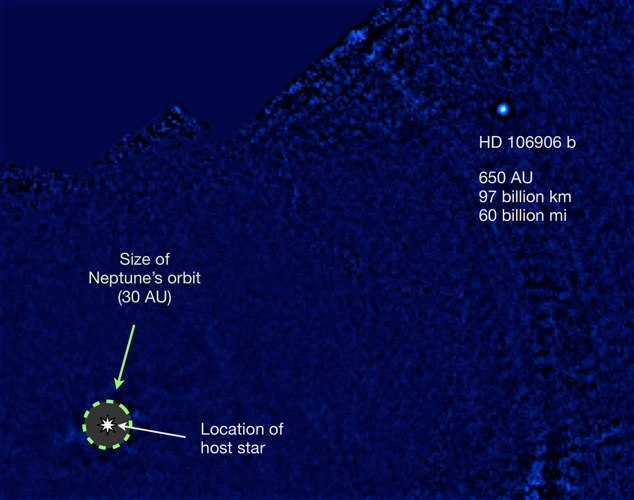
Exoplanets display a remarkable range of diversity, each with its own intriguing characteristics and features. Let’s explore some of the fascinating types of exoplanets that have been discovered:
Hot Jupiters are gas giant exoplanets that orbit extremely close to their host stars. Despite their name, they are not actually hot due to their proximity to the star, but rather due to their scorching atmospheres. These massive planets often exhibit extreme temperature variations from their day to night sides. Hot Jupiters challenge conventional theories of planetary formation and have provided valuable insights into the dynamics of planetary systems.
Super-Earths, as the name suggests, are exoplanets that have a mass higher than Earth’s but lower than that of gas giants like Saturn and Jupiter. They are intriguing because they occupy the “Goldilocks zone,” a region around a star where conditions could be just right for liquid water to exist on the planet’s surface. Super-Earths offer the potential for habitability and have ignited the imagination of scientists and the general public alike.
While exomoons have not yet been definitively confirmed, the potential existence of these celestial bodies surrounding exoplanets has excited the scientific community. Just as our own Moon orbits around Earth, exomoons are thought to orbit exoplanets. The study of exomoons is still in its infancy, and astronomers are searching for indirect evidence of their presence, such as anomalies in the light curves of exoplanets. The discovery of exomoons would greatly expand our understanding of planetary systems and could have significant implications for habitability.
Links:
Hot Jupiters: Strange Giants
Hot Jupiters are a fascinating class of exoplanets that defy our expectations. These gas giants, similar in size to Jupiter, but with highly eccentric orbits, orbit remarkably close to their host stars. This proximity to their parent stars results in scorching hot temperatures that can reach thousands of degrees Celsius, hence their name. Despite their close orbits, these exoplanets manage to avoid plunging into their stars due to the balance between gravitational forces and the outward push of their fast-moving atmospheres. The extreme conditions experienced by Hot Jupiters are truly mind-boggling. Their atmospheres, composed primarily of hydrogen and helium, are subject to powerful stellar winds and intense radiation. As a result, these gas giants often have a distinctive appearance, with bloated atmospheres and puffy cloud formations. Some Hot Jupiters even exhibit strange phenomena such as “hot spots,” areas on their surfaces that experience even higher temperatures due to intense heating from stellar radiation. The discovery of Hot Jupiters has challenged our understanding of planet formation and migration, and their study continues to provide valuable insights into the dynamics and diversity of planetary systems.
| Key Characteristics of Hot Jupiters | |
|---|---|
| Size: | Similar to Jupiter |
| Orbit: | Eccentric orbits, close to their host stars |
| Temperature: | Extremely hot, reaching thousands of degrees Celsius |
| Atmosphere: | Primarily composed of hydrogen and helium |
| Appearance: | Bloated atmospheres, puffy cloud formations, and hot spots |
Super-Earths: Goldilocks and Beyond
Super-Earths are a fascinating category of exoplanets that have captured the attention of astronomers. These exoplanets are larger than Earth but smaller than gas giants like Neptune or Uranus. Their name may be misleading, as they are not necessarily similar to our own planet, but rather refer to their size. Super-Earths can range from a few times the mass of Earth to up to ten times that size.
One intriguing aspect of super-Earths is their potential for habitability. Some of these exoplanets fall within the “Goldilocks Zone” of their host star, also known as the habitable zone. This region is the perfect distance from the star, neither too close nor too far, where conditions may be just right for liquid water to exist on the surface. This key factor is essential for the possibility of life as we know it. However, it’s important to note that being in the habitable zone does not guarantee habitability, as other factors like atmosphere composition and the presence of a magnetic field play crucial roles.
Although super-Earths have captured our imagination with the possibility of habitability, they also present intriguing challenges. Their higher mass, gravity, and different composition compared to Earth can lead to vastly different environments. The surface conditions could range from rocky terrains to oceans of molten lava or even a thick atmosphere with crushing pressures. These unique characteristics make super-Earths a compelling area of study for astronomers seeking to understand the diversity and potential for life in the universe.
Stay tuned for the next section where we explore the captivating concept of exomoons and their role in the exoplanet landscape.
The Hunt for Habitable Worlds
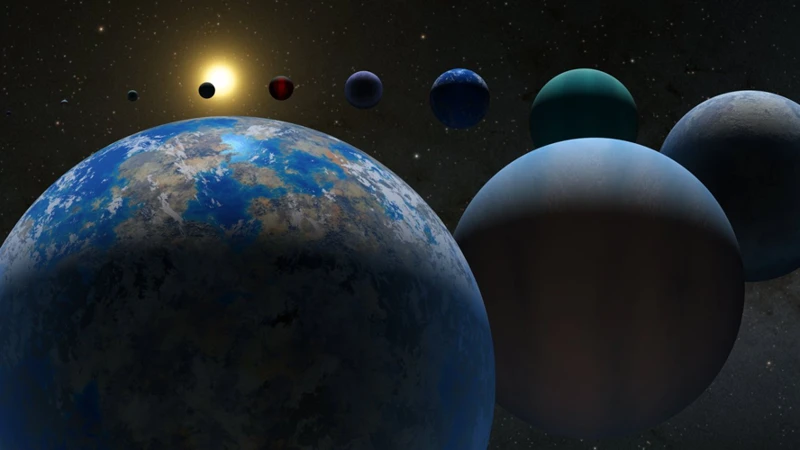
The search for habitable worlds outside our solar system has been a longstanding goal of space exploration. Scientists are fascinated by the possibility of finding worlds with conditions suitable for life as we know it. To identify potentially habitable exoplanets, astronomers rely on various techniques and requirements.
One key technique is transit photometry, which involves observing the small, periodic dips in a star’s brightness as an exoplanet passes in front of it. By carefully analyzing the duration and depth of these transits, researchers can estimate the size, orbital period, and distance of the exoplanet from its host star. This information is crucial in determining whether the exoplanet is within the habitable zone, also known as the “Goldilocks Zone.”
The habitable zone refers to the region around a star where conditions may be just right for liquid water to exist on a planet’s surface, a crucial ingredient for life as we know it. If an exoplanet is too close to its star, its atmosphere may be stripped away by intense radiation, resulting in a barren, inhospitable environment. If an exoplanet is too far from its star, it may be too cold for liquid water to exist, leading to a frozen, desolate landscape.
In addition to the habitable zone, other factors come into play when determining a planet’s habitability. These include the presence of an atmosphere, the composition of the atmosphere, the presence of essential elements and compounds, and the stability of the planet’s orbit.
The search for habitable worlds has been greatly advanced by the Kepler Space Telescope. Launched by NASA in 2009, Kepler was designed specifically to search for exoplanets using the transit method. It has been incredibly successful, discovering thousands of exoplanet candidates, hundreds of which have been confirmed as exoplanets. Kepler’s mission ended in 2018, but its data continues to be analyzed and new discoveries are still being made.
The hunt for habitable worlds is an ongoing endeavor, with future missions and telescopes set to further our understanding of exoplanets and their potential to support life. One such mission is NASA’s James Webb Space Telescope, scheduled for launch in 2021. Equipped with advanced instruments, this telescope will be able to study the atmospheres of exoplanets in greater detail, searching for signs of life and providing valuable insights into the habitability of distant worlds.
Exciting times lie ahead as astronomers continue their quest to find habitable exoplanets. With each new discovery, we come closer to unraveling the secrets of the universe and perhaps finding evidence of life beyond our own planet.
Links:
Techniques and Requirements
The search for habitable exoplanets requires sophisticated techniques and specific requirements. Astronomers employ several methods to identify potentially habitable exoplanets and gather valuable information about them.
One commonly used technique is the transit method. This method relies on observing a star and looking for periodic drops in its brightness, which occur when an exoplanet passes in front of it. By measuring the duration and depth of these dimming events, scientists can determine the size, orbital period, and even the atmosphere of the exoplanet.
Another technique is the radial velocity method. This method relies on the detection of subtle shifts in a star’s spectral lines caused by the gravitational pull of an orbiting exoplanet. By measuring these shifts, astronomers can determine the mass and orbital characteristics of the exoplanet.
The astrometry method involves precisely measuring the position of a star and detecting the small but detectable changes caused by the gravitational influence of an orbiting exoplanet. This method is particularly effective for detecting massive exoplanets located far from their host stars.
Scientists are also exploring the direct imaging method, which aims to capture actual images of exoplanets. This technique is challenging due to the extraordinary difficulty of separating the faint light of an exoplanet from the overwhelming glare of its host star.
To successfully detect and characterize exoplanets, astronomers rely on advanced technology and equipment. Space telescopes, such as the Kepler Space Telescope and the upcoming James Webb Space Telescope, play a crucial role in these efforts. These instruments have the sensitivity and precision required to detect tiny changes in light or spectral lines, providing valuable data about exoplanetary systems.
Additionally, ground-based observatories equipped with high-resolution spectrographs and adaptive optics systems contribute to the hunt for habitable worlds. They can help determine the chemical composition of exoplanet atmospheres and provide insights into their potential habitability.
The search for habitable exoplanets relies on various techniques, including the transit method, radial velocity method, astrometry, and direct imaging. Advanced technology and sophisticated observatories are essential in gathering data and expanding our understanding of these distant worlds.
Links:
Kepler’s Revolution
One of the key milestones in the study of exoplanets was the launch of NASA’s Kepler Space Telescope in 2009. Named after the famed German astronomer Johannes Kepler, this mission revolutionized our understanding of exoplanets. Using the transit method, Kepler monitored the brightness of over 150,000 stars in a specific region of the sky, known as the Kepler field, looking for the telltale dips in light that indicate the presence of exoplanets.
Over its nearly decade-long mission, Kepler discovered thousands of exoplanet candidates, including rocky worlds, gas giants, and even planets that orbit within their star’s habitable zone. This data provided crucial insights into the prevalence and diversity of exoplanets in our galaxy. Kepler’s findings revealed that exoplanets are common, with estimates suggesting that there may be billions of potentially habitable worlds in our Milky Way galaxy alone.
Kepler’s discoveries led to the introduction of new categories of exoplanets, such as super-Earths and sub-Neptunes, which fall between the size of Earth and Neptune. This challenged the previously held belief that our solar system was representative of all planetary systems. Kepler also found several planets with orbital periods similar to Earth’s, indicating that these worlds could potentially possess similar conditions conducive to life.
In 2018, Kepler’s mission came to an end due to the depletion of its fuel. However, the data it collected continues to be a goldmine for exoplanet researchers, paving the way for future missions that will further unravel the mysteries of these distant worlds.
Did you know? Johannes Kepler was an influential figure in the field of astronomy, known for his three laws of planetary motion. His work laid the foundation for our understanding of the dynamics of planetary systems and played a significant role in the development of the field of exoplanet research.
Goldilocks Zone: The Right Conditions for Life
The Goldilocks Zone, also known as the habitable zone, is a crucial concept when it comes to the search for life beyond Earth. This zone refers to a region around a star where the conditions are just right for liquid water to exist on the surface of an exoplanet. Liquid water is considered a key ingredient for the development and sustenance of life as we know it. If an exoplanet is too close to its star, the high temperatures would cause water to evaporate. On the other hand, if it is too far, the low temperatures would result in water freezing solid. Only within this narrow range of orbital distances can a planet maintain stable surface temperatures that allow for the potential presence of liquid water. However, it’s important to note that the presence of liquid water alone does not guarantee the existence of life. Other factors, such as a suitable atmosphere and a stable climate, also play crucial roles. Consequently, astronomers search for exoplanets within the habitable zone as a starting point in their hunt for potentially habitable worlds. By focusing on planets in this zone, scientists can narrow down the possibilities and prioritize their efforts in studying these promising candidates in more detail.
Uncovering Exoplanetary Secrets
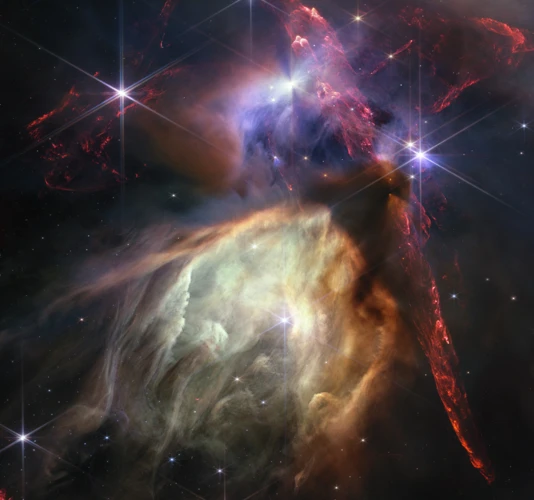
Understanding the mysteries of exoplanets involves delving into their atmospheric analysis, interiors and composition, and factors that contribute to their potential habitability.
Atmospheric Analysis: Examining the atmospheres of exoplanets provides crucial insights into their composition and potential for sustaining life. Scientists can study the spectra of starlight that passes through an exoplanet’s atmosphere during a transit event. This analysis reveals the presence of various gases, such as water vapor, carbon dioxide, and methane, which can provide clues about the planet’s climate and likelihood of supporting life.
Exoplanet Interiors and Composition: Determining the internal structure and composition of exoplanets helps scientists understand their formation and evolutionary history. Studying the mass and radius of an exoplanet can provide valuable information about its density and composition. By comparing these measurements to models, researchers can infer whether an exoplanet is predominantly rocky, gaseous, or a combination of both. This knowledge sheds light on the diversity of exoplanetary systems and the processes that shape them.
Exoplanet Habitability: Key Factors: Habitability is a critical consideration when studying exoplanets. The presence of liquid water, a stable and suitable atmosphere, and a steady source of energy are key factors in determining if a planet could support life. Scientists search for exoplanets within the “habitable zone” of their host star, where conditions are neither too hot nor too cold for liquid water to exist. This Goldilocks zone offers the potential for the development and sustenance of life, as we know it.
By unraveling the secrets of exoplanets through atmospheric analysis, studying their interiors and compositions, and identifying factors that contribute to habitability, scientists inch closer to understanding how diverse planetary systems form and evolve. These discoveries pave the way for future missions and further exploration of the universe.
Links:
Atmospheric Analysis
Understanding the composition and properties of exoplanetary atmospheres is a crucial step in unraveling their secrets. By analyzing the light that passes through or reflects off an exoplanet’s atmosphere, scientists can decipher its chemical makeup and potentially detect signs of life. One powerful technique used for atmospheric analysis is spectroscopy. Spectrographs on telescopes can break down the light from a star into its component wavelengths, revealing absorption or emission lines that correspond to specific molecules. For example, the presence of water vapor, methane, carbon dioxide, and other gases can provide insights into the atmosphere’s temperature, pressure, and potential habitability. Another approach is transit spectroscopy, where scientists study how a planet’s atmosphere filters the starlight during a transit. By comparing the observed spectrum with models and laboratory data, researchers can infer the atmospheric composition and search for biomarkers, such as oxygen or ozone, that indicate the presence of life. Future missions like the James Webb Space Telescope (JWST) will push the boundaries of atmospheric analysis. With its enhanced sensitivity and advanced instrumentation, the JWST will enable scientists to explore even more exoplanetary atmospheres and potentially find habitable worlds outside our solar system.
Exoplanet Interiors and Composition
Understanding the interiors and composition of exoplanets is crucial in unraveling their secrets and determining their potential habitability. While we cannot directly observe the insides of these distant worlds, scientists utilize various methods to infer their internal structures and compositions.
One significant factor in studying exoplanet interiors is their mass and radius. By measuring these properties, scientists can estimate the overall density of an exoplanet and make educated guesses about its composition. For example, a planet with a lower density is likely to be predominantly composed of lighter elements, such as hydrogen and helium, similar to gas giants like Jupiter and Saturn. On the other hand, denser exoplanets may consist of heavier elements, including rocky materials like iron and silicate minerals.
One technique used to further investigate exoplanet compositions is transit spectroscopy. This method involves analyzing the light passing through an exoplanet’s atmosphere during its transit in front of its host star. By studying the absorption and emission lines in the spectrum, scientists can identify the presence of different gases and elements, providing valuable insights into the composition of the exoplanet’s atmosphere.
Another approach is known as the “lucky imaging” technique, which assists in refining the observations of exoplanet atmospheres. This method involves taking multiple high-resolution images of a star system and combining them to reduce the blurring caused by Earth’s atmosphere. By capturing these incredibly detailed images, scientists can discern slight changes in brightness that occur when an exoplanet passes in front of its star. This technique allows for the detection of atmospheric features and the exploration of exoplanet weather patterns and cloud formations.
While much progress has been made in understanding exoplanet interiors and compositions, there is still much to uncover. The development of advanced telescopes, like the James Webb Space Telescope (JWST), will enhance our capabilities to study exoplanet atmospheres and delve further into their inner workings. With continued advancements in technology and observational techniques, we are on the cusp of uncovering even more secrets about these intriguing worlds.
Links:
Exoplanet Habitability: Key Factors
When it comes to determining the habitability of an exoplanet, several key factors come into play. One crucial factor is the location of the exoplanet within its star’s habitable zone, often referred to as the “Goldilocks Zone.” This zone represents the region where conditions are just right for liquid water to exist on the planet’s surface – a vital ingredient for life as we know it. Being too close to its star can lead to scorching temperatures, causing water to boil away, while being too far can result in freezing conditions, causing water to remain frozen.
Another important factor is the exoplanet’s atmosphere. A suitable atmosphere acts as a shield, protecting the planet’s surface from harmful radiation while also regulating temperature. The composition of the atmosphere is also crucial, as certain gases such as carbon dioxide and methane can trap heat and help maintain a stable climate. Additionally, the presence of an ozone layer is indicative of a protective shield against harmful ultraviolet radiation.
The type of star that an exoplanet orbits can also influence its habitability. Different types of stars have different lifespans and energy output, which directly impacts the planet’s overall climate and conditions. For example, planets orbiting red dwarf stars may be more prone to solar flares and heightened radiation, while planets orbiting massive or evolved stars may experience extreme temperature variations.
Other factors affecting habitability include the exoplanet’s mass and size, its geology and plate tectonics, the presence of a magnetic field, and the possibility of having a stable and suitable long-term atmosphere. All of these factors need to align in a delicate balance to provide the necessary conditions for life to potentially emerge and flourish.
Understanding and identifying these key factors is crucial in the search for potentially habitable exoplanets. By analyzing the data gathered from various observational methods and studying the composition and characteristics of exoplanetary atmospheres, scientists can make valuable assessments about the potential habitability of these distant worlds.
Implications and Future Discoveries
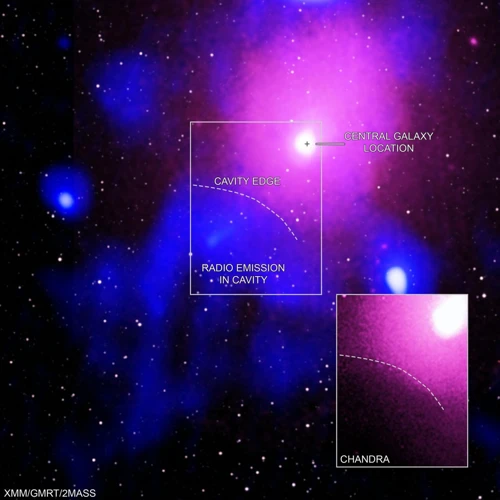
The exploration of exoplanets has profound implications for our understanding of the universe and the potential for extraterrestrial life. As we uncover more about these distant worlds, we gain insight into the formation and evolution of planetary systems. By studying the atmospheres of exoplanets, scientists can analyze their chemical compositions and search for signs of life-sustaining elements, such as water vapor and potentially even biogenic molecules. This quest for extraterrestrial life is a fundamental question that has fascinated humanity for centuries.
Looking ahead, there are exciting future discoveries on the horizon. The launch of the James Webb Space Telescope (JWST) is highly anticipated, as it promises to revolutionize our understanding of exoplanets. Equipped with advanced instruments, the JWST will provide unprecedented insights into exoplanetary atmospheres, compositions, and even the potential for habitability. It will build upon the discoveries made by its predecessor, the Hubble Space Telescope, and pave the way for future missions and space-based observatories.
The search for exoplanets extends beyond our own galaxy. The upcoming European Space Agency’s PLATO mission, set to launch in the 2030s, aims to discover exoplanets in the habitable zones of stars within our neighboring Milky Way galaxy. This mission will greatly expand our understanding of the prevalence of Earth-like planets and the potential for life in our cosmic neighborhood.
The implications of exoplanet research reach far beyond the boundaries of our own solar system. They encompass our understanding of planetary formation, the search for life beyond Earth, and the possibilities for future exploration. With technological advancements and ambitious missions, the future holds great promise for unraveling the secrets of exoplanets and unlocking the mysteries of the universe.
Links:
Search for Extraterrestrial Life
The search for extraterrestrial life is one of the most intriguing aspects of exoplanetary exploration. Scientists are driven by the question: Are we alone in the universe? To answer this age-old query, a variety of methods and instruments have been developed to detect signs of life beyond Earth.
One approach is the study of exoplanetary atmospheres. By analyzing the composition and chemical signatures of these atmospheres, scientists can search for the presence of molecules that may indicate the existence of life. Key molecules of interest include oxygen, methane, and other organic compounds. These atmospheric studies are typically conducted using spectroscopy, which allows scientists to identify specific wavelengths of light absorbed or emitted by various molecules.
Another method is the search for biosignatures, which are substances or phenomena that provide evidence of past or present life. This includes the detection of complex organic molecules, the presence of water, and the identification of habitable conditions in the form of liquid water and the right temperature range. The identification of biosignatures requires a comprehensive understanding of the characteristics and requirements of life as we know it on Earth.
In addition to studying the exoplanets themselves, there are efforts to detect potential signals from advanced extraterrestrial civilizations. This is done through initiatives such as the Search for Extraterrestrial Intelligence (SETI), which scans the skies for radio signals that could originate from intelligent beings. These searches often focus on stars that are similar to our Sun and have habitable-zone exoplanets.
While the search for extraterrestrial life is incredibly challenging, it is a field filled with excitement and possibility. Each new discovery brings us closer to unraveling the mysteries of life beyond our own planet.
Links:
Major Upcoming Missions
Exciting times lie ahead in the field of exoplanet research, with several major upcoming missions slated to further our understanding of these distant worlds. These missions aim to expand our knowledge of exoplanet populations, their atmospheres, and potentially detect signs of life. Let’s explore some of the highly anticipated missions that are set to revolutionize our understanding of exoplanets.
1. James Webb Space Telescope (JWST): Expected to launch in 2021, the JWST is the most ambitious space telescope ever built. With its advanced capabilities, the JWST will be capable of observing exoplanet atmospheres and studying their composition in detail. This mission will play a crucial role in identifying potentially habitable exoplanets and studying their potential for harboring life.
2. PLATO: The PLATO (PLAnetary Transits and Oscillations) mission, planned for launch in 2026, will focus on discovering and characterizing exoplanets around bright stars. PLATO will utilize multiple telescopes to monitor thousands of stars simultaneously, detecting the tiny dips in brightness caused by exoplanets crossing in front of their host stars. This mission aims to provide crucial insights into the diversity and architecture of exoplanetary systems.
3. Transiting Exoplanet Survey Satellite (TESS): Launched in 2018, TESS has already made significant contributions to exoplanet research. TESS uses the transit method to search for exoplanets, scanning large sections of the sky to detect periodic dips in starlight. This ongoing mission will continue to observe thousands of stars, uncovering new exoplanets and providing valuable data for follow-up observations.
4. European Extremely Large Telescope (E-ELT): Planned to begin operations in the mid-2020s, the E-ELT will be the world’s largest optical and infrared telescope. With its enormous mirror and advanced technology, the E-ELT will enable astronomers to study exoplanets in even greater detail. It will play a crucial role in characterizing exoplanet atmospheres, searching for signs of habitability, and potentially detecting biomarkers.
These upcoming missions hold immense promise for the field of exoplanet research. They are poised to revolutionize our understanding of these distant worlds, shedding light on their atmospheres, compositions, and perhaps even the existence of life beyond Earth.
Links:
Conclusion

The exploration of exoplanets has been a remarkable journey into the unknown, expanding our understanding of the universe and the possibility of life beyond our own planet. From the discovery of hot Jupiters to the intrigue surrounding potentially habitable exomoons, scientists have made tremendous progress in uncovering the secrets of these distant worlds.
Through advanced techniques and dedicated missions like Kepler and upcoming ventures such as the James Webb Space Telescope, the search for exoplanets and signs of extraterrestrial life continues to push boundaries. By analyzing exoplanetary atmospheres, interiors, and composition, scientists aim to decipher the conditions necessary for habitability and the potential for life to exist beyond Earth.
While many questions remain unanswered, the quest for exoplanetary knowledge persists, fueled by curiosity and the innate human desire to explore the vastness of the cosmos. The discoveries yet to come will undoubtedly shape our understanding of the universe and our place within it.
As we conclude this journey into the enigmatic world of exoplanets, we emerge with a greater appreciation for the wonders that lie beyond our own solar system. The mysteries waiting to be unraveled are countless, and the pursuit of knowledge continues to drive scientific exploration and our never-ending fascination with the cosmos.
1. Hydrogen and Helium-rich Atmospheres – Learn more about the impact of hydrogen and helium in exoplanetary atmospheres
2. Extraterrestrial Life Search Strategy – Dive deeper into ongoing efforts to search for signs of life beyond Earth
Frequently Asked Questions

What is the difference between exoplanets and planets?
The main difference between exoplanets and planets is their location. Exoplanets are planets that orbit stars outside of our solar system, while planets refer to those that orbit our own Sun.
How do scientists detect exoplanets?
Scientists detect exoplanets through various methods, including the transit method, which measures the dimming of a star’s light as an exoplanet passes in front of it, and the radial velocity method, which detects the gravitational wobbles caused by an orbiting exoplanet.
What are hot Jupiters?
Hot Jupiters are a type of exoplanet that are similar in size to Jupiter but orbit extremely close to their host stars. They experience high temperatures due to their proximity to the star, unlike our own Jupiter, which resides much farther from the Sun.
What are super-Earths?
Super-Earths are exoplanets that are larger than our Earth but smaller than gas giants like Neptune and Saturn. They have a wide range of compositions, which can include both rocky and gaseous components.
Do all exoplanets have moons?
No, not all exoplanets have moons. However, the discovery of exomoons, which are moons that orbit exoplanets, has opened the possibility for more complex and dynamic systems within planetary systems.
What is the Goldilocks Zone?
The Goldilocks Zone, also known as the habitable zone, refers to the region around a star where conditions may be just right for the existence of liquid water on the surface of a planet. It is considered a key factor in determining a planet’s potential for supporting life.
How do scientists study the atmospheres of exoplanets?
Scientists study the atmospheres of exoplanets using a technique called spectroscopy. They analyze the light that passes through or is reflected off an exoplanet’s atmosphere, looking for specific signatures that reveal the presence of certain molecules or elements.
What factors make a planet habitable?
Several factors contribute to a planet’s habitability, including its distance from its star, the presence of a stable atmosphere, the availability of water, and the planet’s composition. These factors determine whether conditions are suitable for the existence of life as we know it.
Are there any missions dedicated to studying exoplanets?
Yes, several missions have been launched specifically to study exoplanets. NASA’s Kepler mission, for example, provided valuable data on exoplanet populations, while the upcoming James Webb Space Telescope is expected to revolutionize our understanding of exoplanet atmospheres.
Could there be extraterrestrial life on exoplanets?
While we have not yet discovered conclusive evidence of extraterrestrial life, the existence of exoplanets in the habitable zone increases the possibility that life could exist elsewhere in the universe. Future missions and advancements in technology may provide us with more insights into this fascinating question.
References
Frequently Asked Questions

How many exoplanets have been discovered so far?
As of now, scientists have discovered and confirmed the existence of more than 4,000 exoplanets.
What makes exoplanets different from planets in our own solar system?
Exoplanets are planets that orbit stars other than our Sun, while the planets in our solar system orbit the Sun.
How do astronomers detect exoplanets?
Astronomers use various methods to detect exoplanets, including the transit method, radial velocity method, and direct imaging.
What is the transit method of detecting exoplanets?
The transit method involves detecting tiny reductions in a star’s brightness when an exoplanet passes in front of it, causing a partial eclipse.
Can exoplanets support life?
Exoplanets within the habitable zone, or the “Goldilocks zone,” that have the right conditions for liquid water, could potentially support life.
What are exomoons?
Exomoons are moons that orbit exoplanets, similar to how Earth’s moon orbits our planet.
What is the significance of atmospheric analysis in studying exoplanets?
Atmospheric analysis can provide insights into the composition of exoplanet atmospheres, including the presence of gases such as oxygen, methane, and carbon dioxide.
What are the key factors for exoplanet habitability?
The key factors for exoplanet habitability include the presence of liquid water, a stable atmosphere, and a suitable distance from its host star.
Are there any upcoming missions focused on finding exoplanets?
Yes, there are several upcoming missions, such as the James Webb Space Telescope and the European Space Agency’s PLATO mission, dedicated to finding and studying exoplanets.
What are scientists hoping to discover through the search for extraterrestrial life?
Scientists hope to find evidence of life beyond Earth, which would have profound implications for our understanding of the universe and our place in it.
References
- Unveiling the Secrets of Alien Worlds: The Jurassic-Era …
- Is mystery of shrinking exoplanets solved? Data from NASA …
- Unraveling the mysteries of planets that are hotter than stars

